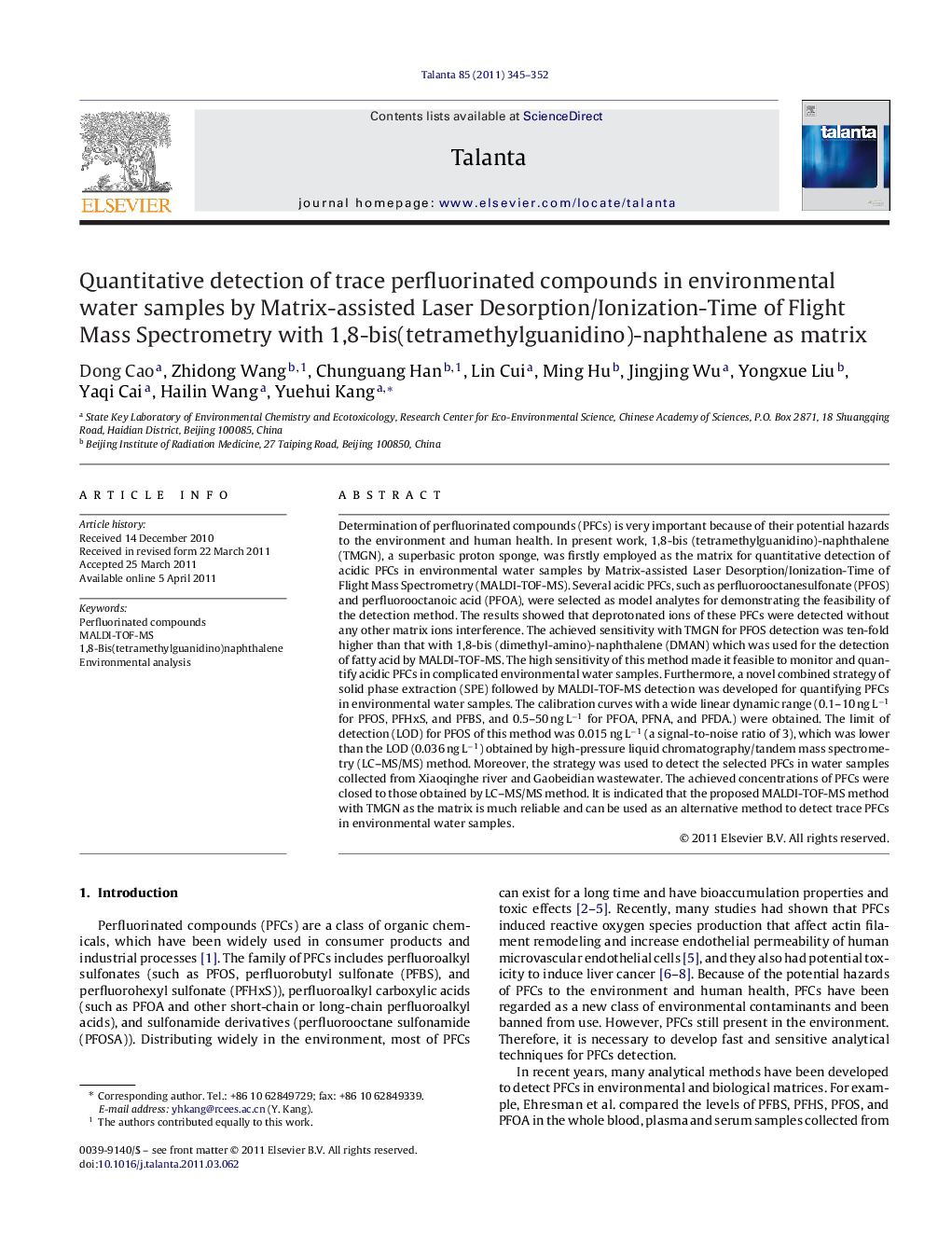| Article ID | Journal | Published Year | Pages | File Type |
|---|---|---|---|---|
| 10559784 | Talanta | 2011 | 8 Pages |
Abstract
Determination of perfluorinated compounds (PFCs) is very important because of their potential hazards to the environment and human health. In present work, 1,8-bis (tetramethylguanidino)-naphthalene (TMGN), a superbasic proton sponge, was firstly employed as the matrix for quantitative detection of acidic PFCs in environmental water samples by Matrix-assisted Laser Desorption/Ionization-Time of Flight Mass Spectrometry (MALDI-TOF-MS). Several acidic PFCs, such as perfluorooctanesulfonate (PFOS) and perfluorooctanoic acid (PFOA), were selected as model analytes for demonstrating the feasibility of the detection method. The results showed that deprotonated ions of these PFCs were detected without any other matrix ions interference. The achieved sensitivity with TMGN for PFOS detection was ten-fold higher than that with 1,8-bis (dimethyl-amino)-naphthalene (DMAN) which was used for the detection of fatty acid by MALDI-TOF-MS. The high sensitivity of this method made it feasible to monitor and quantify acidic PFCs in complicated environmental water samples. Furthermore, a novel combined strategy of solid phase extraction (SPE) followed by MALDI-TOF-MS detection was developed for quantifying PFCs in environmental water samples. The calibration curves with a wide linear dynamic range (0.1-10 ng Lâ1 for PFOS, PFHxS, and PFBS, and 0.5-50 ng Lâ1 for PFOA, PFNA, and PFDA.) were obtained. The limit of detection (LOD) for PFOS of this method was 0.015 ng Lâ1 (a signal-to-noise ratio of 3), which was lower than the LOD (0.036 ng Lâ1) obtained by high-pressure liquid chromatography/tandem mass spectrometry (LC-MS/MS) method. Moreover, the strategy was used to detect the selected PFCs in water samples collected from Xiaoqinghe river and Gaobeidian wastewater. The achieved concentrations of PFCs were closed to those obtained by LC-MS/MS method. It is indicated that the proposed MALDI-TOF-MS method with TMGN as the matrix is much reliable and can be used as an alternative method to detect trace PFCs in environmental water samples.
Related Topics
Physical Sciences and Engineering
Chemistry
Analytical Chemistry
Authors
Dong Cao, Zhidong Wang, Chunguang Han, Lin Cui, Ming Hu, Jingjing Wu, Yongxue Liu, Yaqi Cai, Hailin Wang, Yuehui Kang,
